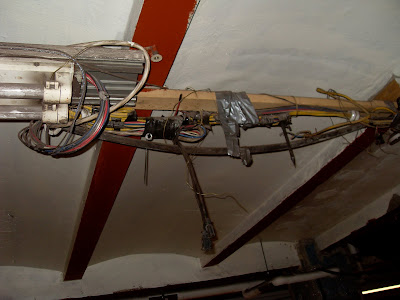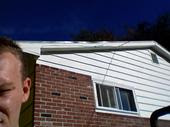[from the "Landscapes and Geography" section of Painted Lace and other Pieces, Yale U.P., 1955. Photos by me. Model: Michaela. Audio linden by Bethany Ides.]

“What did they seize when they saw they seized it when they saw it.”
“Arrange a way.
“A way to have bright and brighter.
“When back to back and back can there be can they be satisfied. As soon.
“At noon at once.
“Natural phenomena make earthquakes at once.
“Natural phenomena make pansies soon.
“Natural phenomena resist color.
“Natural phenomena appointed, apart and practically appeared.
“Natural phenomena make it difficult not to look.”

“Mountains—exchange.
“Lakes—express.
“Rivers—attract.
“Valleys—connect.”

“We said we at once said we said twice we said flying and we said the pigeons and yellower. If yellow is not seen it is as much as flown. This makes an oriole and near white and pink and colored shrubs which may be trees.”

“… and naturally and as naturally, to look is to leap and not for instance.”

“Would it be very certain that rain and its equivalent sun and its equivalent a hill and its equivalent and flowers and their equivalent have been heard and seen and felt and followed and more around and rounder and roundly. Is there also a hesitation in going slower. She said yes.”

“This is natural this is unnatural. It is natural. It is natural that from the stand-point of white all color is paler. It is natural that from the stand-point of day-light all color is whiter it is natural that from the stand-point of snow-white all color in day-light is blue white or cloud white or green white, or in day-light, day-light. It is natural that from the stand-point of white all color is as light. From the standpoint of white naturally from the stand-point of white. It is natural from the stand-point of white all color in day-light from the stand-point of white from the stand-point of white all color in day-light all color from the stand-point of white. In day-light white from the stand-point of white, chalk white and from the stand-point of day-light from the stand-point of white. Naturally.
“Who knows the difference between solid and solidly, between solidly and solid. Who knows the difference between the moon solidly, between the solid as soon between solidly and soon. Who knows the difference between soon and solidly, between solid and soon. Who knows the difference between noon and moon who knows the difference between solid and moon between solid and soon. Naturally.”

“Phenomena consist in building, horses, chairs, windows and stones. Natural phenomena consist in silks bureaus butter and lamps. Natural phenomena consist in shouts in leaves and in nests, natural phenomena consist in shoes lives and roads.”

“She left them as that was it. A Phenomena of Nature is big trees and high grass and roads and as it was.”

“Those which to choose makes when they have to line it with itself and by this means they can allow and from the middle up and from the middle down. They do believe that it has been nearly done. Because of care. Because of water and welcome. Because of their importance. Because of their importance they allow that they are around them by this time and they do so noisily exchange volcanoes for thunder earthquakes for rainbows and houses for land and even before that they see. They realize around the way that they came that they must and disturbance to exchange for easier and habitable arches.”

“They meant it as it was. By nearly all of it. It is not of any use it is in use and so and for and by this time and they have nearly nearly to be more more aware and not having hammered hammered makes joining joining through this in the mean time by the way. Naturally they had it their way.”

“Lists of Natural Phenomena.
“Thunder winter and lightning lakes, borders and feathers shawls hangings and traceries birds hours and at once.”

"The sense of time is a phenomena of nature. It is what adds complexity to composition. There can be past and future which succeed and rejoin, this makes romantic realistic and sentimental and then really the three in one and not romantic and not realistic and not sentimental. The three in one makes a time sense that adds complexity to composition. A composition after all is never complex. The only complexity is the time sense that adds that creates complexity in composition. Let us begin over and over again. Let us begin again and again and again.”




No comments:
Post a Comment